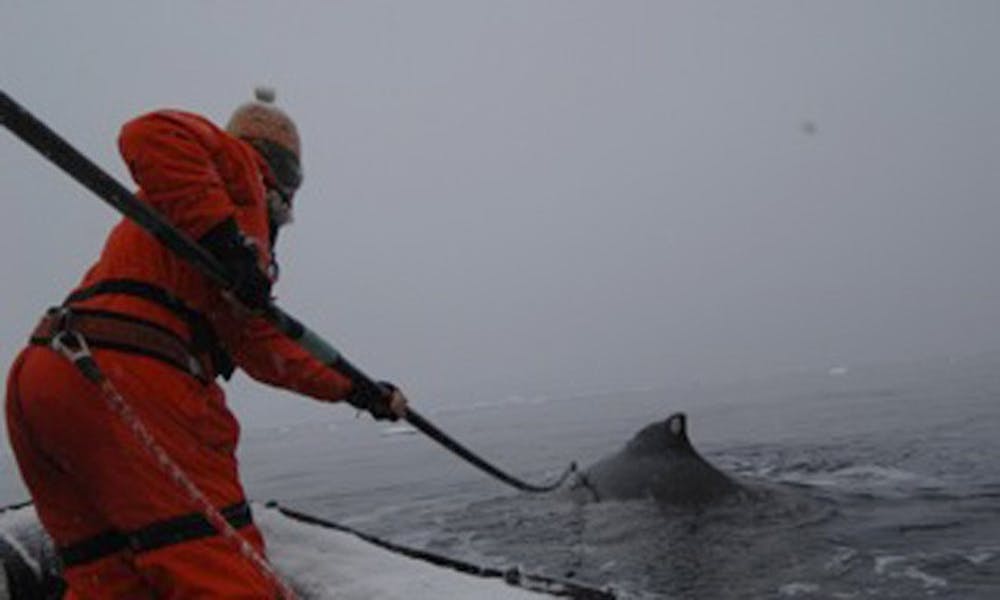Antarctica’s rough seas and high-speed winds did not stop a recent Duke Marine Lab expedition from studying humpback whales and other wildlife in the region. Amid freezing temperatures and even a snowstorm with winds up to 95 knots, the scientists sought to gain a comprehensive understanding of the Antarctic aquatic ecosystem.
Duke scientists Doug Nowacek and Ari Friedlaender led a team of researchers to the Antarctic Peninsula this summer to investigate humpback whale behavior, generating new knowledge about both the species and krill, the whales’ shrimp-like prey. The expedition, which ran from May 4 to June 13, was funded by the National Science Foundation. The NSF oversaw the trip as part of a three-year research proposal.
“We’re the first people to look at [this ecosystem] and understand how whales in the Antarctic feed,” Frindlaender said.
The team included scientists from the Duke Marine Lab, the University of Hawaii, National Geographic and several other institutions across the country. With the combined expertise of a diverse research team, the scientists were able to conduct many different experiments related to whale-tagging, visual observation, krill biology, physical oceanography and more aboard the research vessel Nathaniel B. Palmer.
Researchers used Digital Acoustic Recording Tags, or noninvasive suction-powered recording devices to monitor variables such as temperature, sounds and the whale’s pitch and depth.
“The tag is the size of a candy bar and uses flash memory,” Friedlaender said, adding that the tags adhere to the whales for approximately 24 hours. The data are then used to virtually animate the track of the whale, providing a comprehensive picture of its movement over the course of a day.
Friedlaender noted that during the tagging process, the taggers had to “blend in” with the whales in order to get close enough to put on the tag. Following a whale sighting, the taggers would go out in small inflatable boats called Zodiacs to apply a tag to the back of a humpback whale using a flexible, 18-foot carbon fiber pole—resembling a wind-surfing mast—with the tag on the end.
“It’s definitely a rush to actually put the tag on the whale,” said Alison Stimpert, a tagger and researcher from the University of Hawaii. “The driver has to put you in the right spot. The whales are bigger than the boat, so at the instant you tag them you feel very small.”
While the taggers traveled in search of whales, teams of visual observers scanned the seas from the Nathaniel B. Palmer’s 80-foot observation tower. The visual observers sought to record the overall density of aquatic predators in the region, including whales, seals and seabirds.
In addition, several scientists worked on mapping the krill density, or location and amount of prey in the water.
Friedlaender said that in Antarctic winter, starting around May, krill tend to retreat from their widespread summer distribution, gathering in inland bays and fjords. Using an underwater sound-wave detection method, researchers discovered a previously unknown abundance of krill in the Antarctic bays. In one instance, scientists identified a swarm of approximately 2 million tons of krill that covered 8 by 12 kilometers, 200 to 300 meters deep, Friedlaender added.
Nowacek said the team’s findings may change the way scientists understand whale migration, noting that the abundance of prey even in winter months may indicate that some humpback whales do not migrate on a yearly basis.
“Everyone assumes these whales migrate every year. But there’s lots of food down there, and if they don’t have to give birth [near the equator], then why make the journey?”
Get The Chronicle straight to your inbox
Signup for our weekly newsletter. Cancel at any time.

